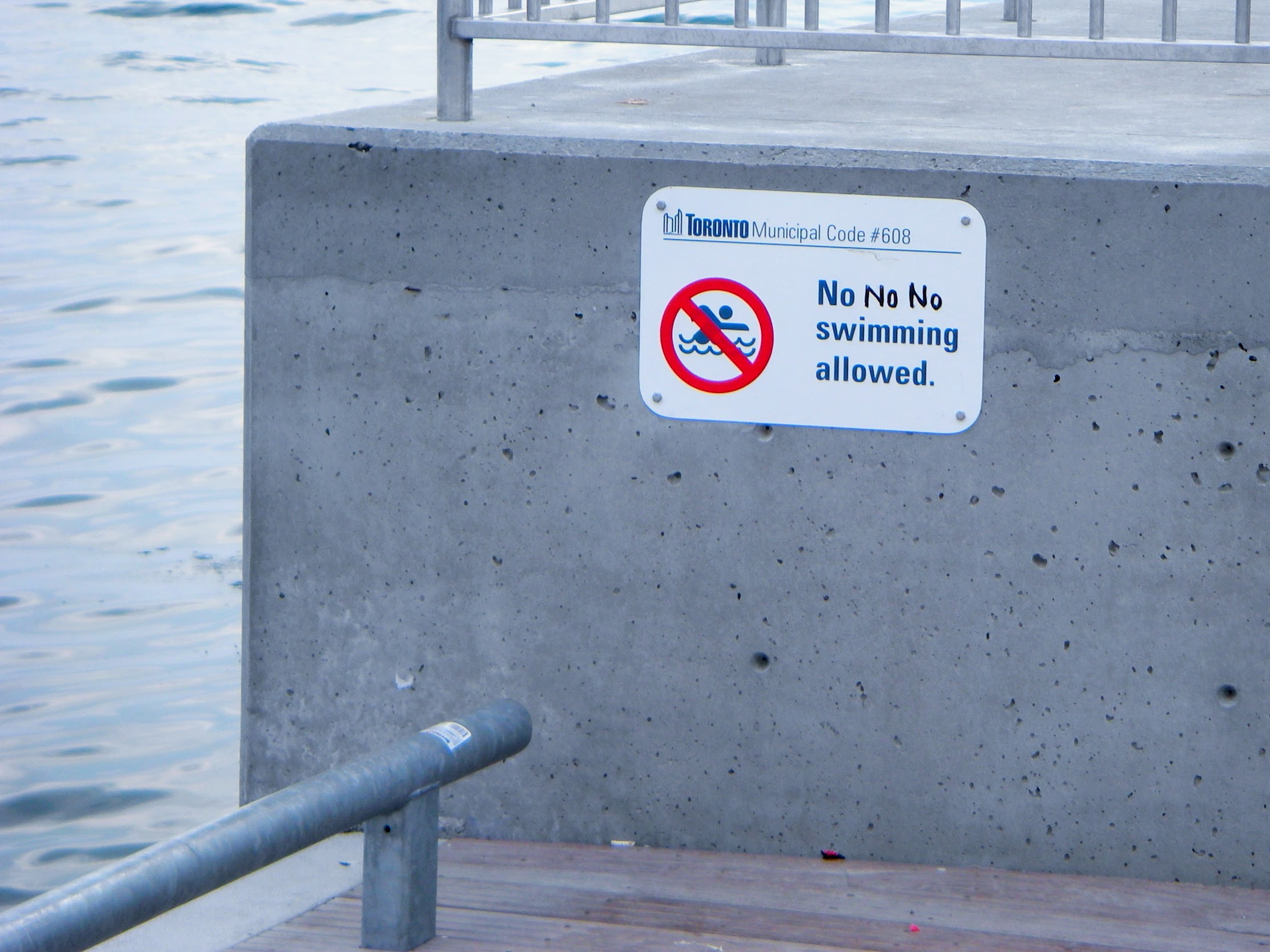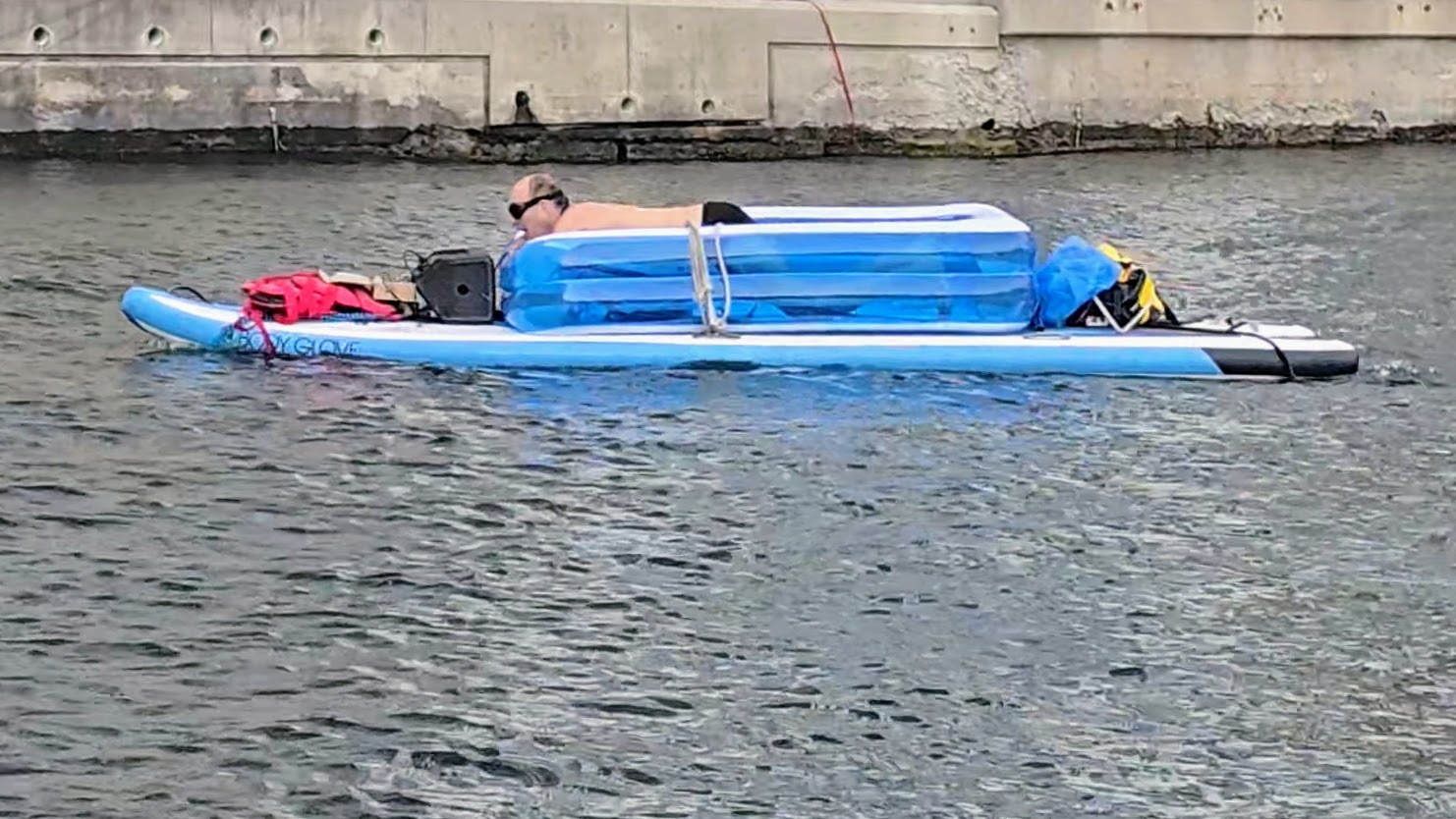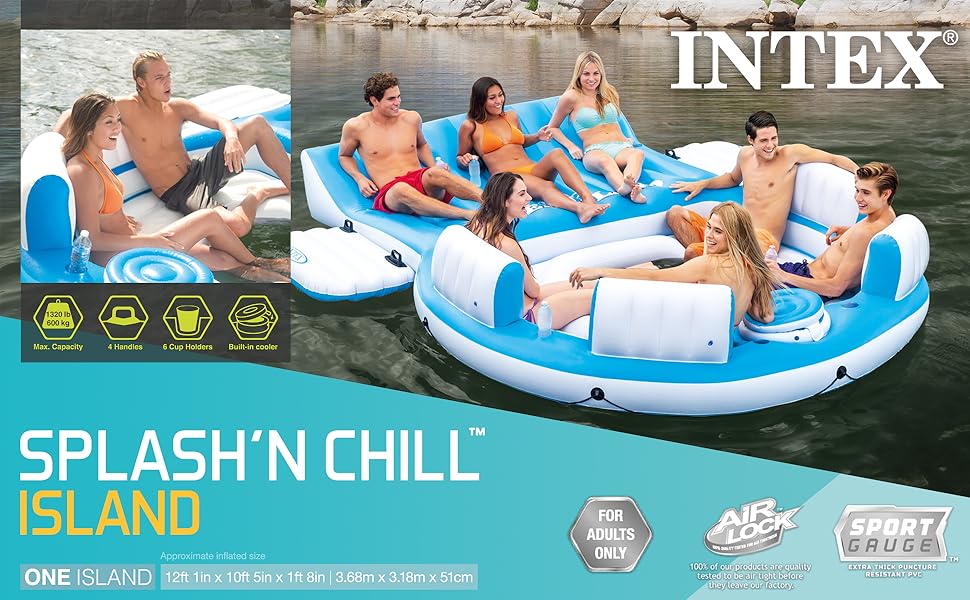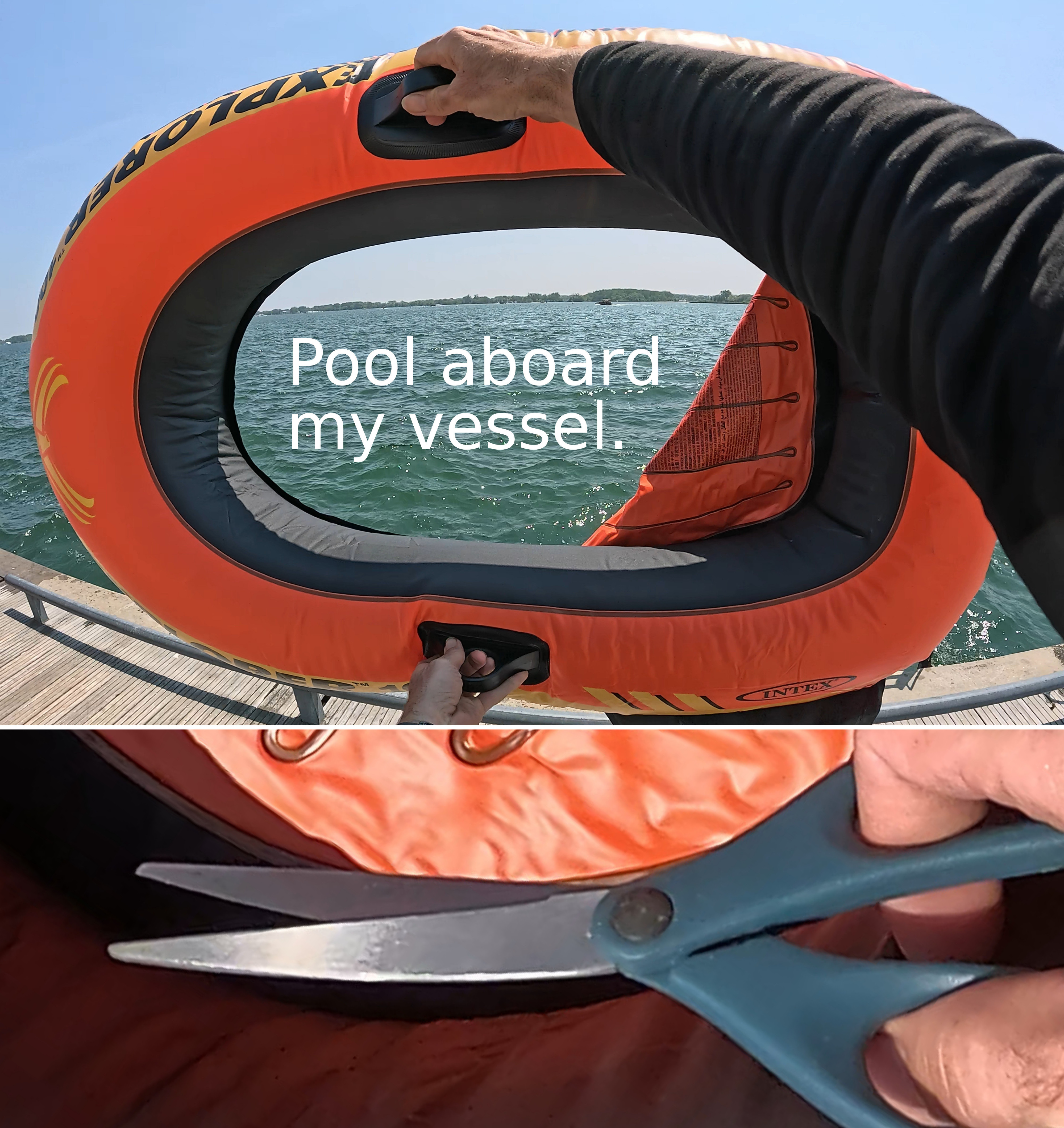
Technology (AI, surveillance, and XR/XI cyber/cyborg-tech) is a self-driving Porsche with no brakes. Its unstoppable today. Although we can't stop it, it has a rudder and we can still steer it. We must steer it, to chart a safe and sustainable course for the future of humanity and Earth.
Cybernetics (cybersecurity, cyborgs, and everything else "cyber") comes from the Greek word kubernao, which is the root of the English words "govern", "governance", and "cybernetics". It originally referred to steering a ship but has now evolved into broader ideas of steering or guiding or governing technology and society in general.
To stay true to the aquatic origins of all things "Cyber", Toronto serves as a good example to the rest of the world. It is the largest city on the Great Lakes which hold about 1/5th of world's (about 85 percent of North America's) freshwater supply. The world's largest lake (holds about 1/10th the world's freshwater supply) is located in Ontario, of which Toronto is the capital.
Water is at the center of today's concerns, from cooling data centres, to environmental issues brought on by AI.
Cybernetics+Government today tends to prioritize development even if it damages the environment and our humanity. Presently the government is removing bike lanes and has a ban on installation of new bike lanes. Developers are often automobile-centric. Removal of bike lanes is intended to make more room for cars. Removal of sidewalks could be a next logical extension of this governance, to create more room for self-driving cars that carry us from our homes to supervised walking areas that might have names like the "Sunnyside Walking Pavilion" or "Woodbine Walking Station".
We're also seeing over-development of forests and beaches like the Greenbelt and Ontario Place, taking away public access to its accessible beach, and removing Toronto's only public accessibility ramps. Thanks to this development, many persons with disabilities are no longer able to access Lake Ontario.
Our polictical leaders are prioritizing large motorized boats like Hoverlink. There is the possibility that the proliferation of larger and faster vessels could make swimming, paddling, and rowing more dangerous.
Efforts to clean up Lake Ontario have been progressing well, and there are now some places within the inner harbour where it is safe to swim during much of time when there has not been a recent rainfall. We have finally learned that it makes more sense to just keep the lake clean than to pollute the lake raising the difficulty of purifying the water for uses like drinking.
We call upon governments to balance the monetary big-business pressures of development, with maintaining access to the "little business" of swimming, paddling, and rowing.
As an allegory for responsible governance, we proffer "The Ship of Kolympi" as a thought experiment about the freedom to access public space without being required to purchase, rent, or otherwise hire or possess a conveyance (vehicle, vessel, or the like).
For example, a person without a boat is often forbidden from accessing or entering water even when it is safe to do so. Similarly, a late-night pedestrian or cyclist may be denied access to food and water at a restaurant that only services people in vehicles. Late at night it is often the case that drive-through is the the only option available, and it is common that people walking up to the window are refused service because they are not in a vehicle.
Consider the fundamental human right to safe access to water for swimming or
bathing (e.g. a cold-plunge for health, therapy, or spiritual healing).
Everyone, including those with disabilities, has a basic right to water access,
but that access is being taken away little by little, with a proliferation of
"NO SWIMMING" signs, along with commercial developments of the waterfront that
leave few places to launch a kayak, canoe, or paddleboard. Due to development
Toronto now has
only one remaining beach that is wheelchair accessible all the way to the
water's edge.
The water quality there at HTO Urban Beach is
quite good most of the time, but it features "NO SWIMMING" signs:

Our thought-experiment begins with a full-size conveyance (e.g. ship or vehicle), from which pieces or parts are removed or replaced with smaller ones, until we reach a modest human-scale.
A large cruise ship may have several pools which can be used, even when the
ship is docked at, or passing by, a "NO SWIMMING" beach. The pools could be
filled with chlorinated water, or perhaps clean saltwater or freshwater from
the surrounding ocean or lake, if the surrounding water were clean enough.
Consider next, downsizing that ship (or building a series of ships each one
smaller than the one before it) to a ship with only one pool, or maybe a very
small "yacht" with a very small pool upon it, and suppose that pool were
filled with water from the surroundings, perhaps by way of a pump. As the ship
gets smaller, it might come to resemble a Bodyglove Crusader 7-person
paddleboard, i.e. something that looks like a giant surfboard, with an
inflatable pool on top of it, as shown below:

In this prototype the means of propulsion is by way of human-powered electric thrusters powered from an array of hydrophones that generate electricity from swimming in the pool. Thus the "ship" is propelled forward by swimming in its pool. Here the pool water is totally separate from the lake.
Now suppose that pool were to be directly connected to the surrounding water by a pipe of ever-increasing size. Eventually, as the ship gets smaller, and the pipe connecting the ship's pool to the lake gets larger, we might approach something that resembles an Intex Relaxation Island Float Raft, which is a six-person vessel, topologically equivalent to a torus (swim ring), as shown below:

It is not hard to imagine that vessel decrease in size to a 5-person, 4-person, 3-person, 2-person, then 1-person swim island like this inflatable rowboat
with the bottom cut out of it:

Check out this video:
https://www.youtube.com/watch?v=8GBwDQHAHo8
Next consider a paddleboard, propelled by human power, at first with full-size paddles, and then with hand-paddles. Hand-paddles were invented by Benjamin Franklin at the age of 11, for swimming in Boston's Charles River. They are often used by swimmers for developing arm strength. Next, consider a paddleboard propelled by someone without paddles at all, e.g. just hand-paddling with bare hands. Next might come a smaller and smaller paddleboard, surf rescue board, surfboard, or the like, perhaps eventually leading to a small kickboard, propelled in much the same way as the Bodyglove Crusader prototype, by kicking.
Eventually we come to realize the legal fiction of a "NO SWIMMING" sign.
In summary, safety is a basic human right, as is safe access to safe water. We call upon all authorities to prioritize safe water accessibility and to ensure that water remains safe for everyone, not just those in big boats, as we envision "Mobase" as a base-of-operations for mobility and accessibility in downtown Toronto around Peter Street Basin ("Mobasin"), HTO Urban Beach, and Harbourfront Canoe and Kayak Centre. And we also call upon ourselves and each other to engage in Safetymaking™, to make the world safer, especially when and where our authorities won't.
More generally, let us balance big boats, big data, and big-watching (surveillance) with little boats (swimming or paddling), little data (blockchain) and little-watching (sousveillance). We're all cyborgs in the Manfred Clynes sense of a person riding a bicycle or a person riding on a vessel. But we must never adopt technologies that become compulsory or enslave us. We must balance the benefits of technology with the right to, at least once in a while, not use the technology. The right to swim is the right to be a non-cyborg, even if only briefly.
The Swimboat™ was invented by S. Mann in Canada in the 1970s, and is also known as the Minimum Allowable Vessel (MAV) or Minimum Viable Vessel (MVV); see Mann, Steve. "... Liminal Spaces of Body, Ownership, and Control." In Humanity In-Between and Beyond, Monika Michałowska, ed, pp. 141-152.: Springer International Publishing, 2023.
See also The Ship of Theseus, also known as Theseus's Paradox.
Notes: The ship's name, Kolympi or Kolymvisis, derives from the Greek word for "swimming", e.g.
no swimming; όχι κολύμπι; óchi kolýmpi
swimming; κολύμπι; kolýmpi
the ship of swimming; το πλοίο της κολύμβησης; to ploío tis kolýmvisis